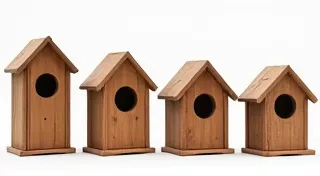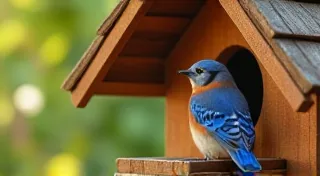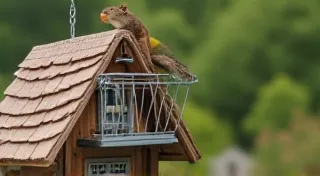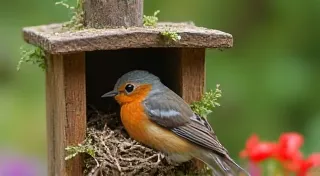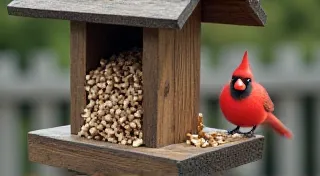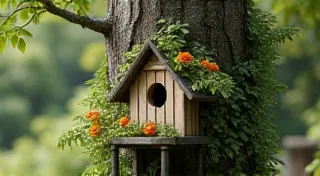Bird House Materials: Choosing the Best Wood for Longevity
Building a bird house is a rewarding DIY project, offering a beautiful addition to your yard and a safe haven for feathered friends. A crucial element to ensure your bird house stands the test of time and provides a healthy environment is selecting the right wood. This article delves into the best wood choices for bird houses, considering durability, weather resistance, and importantly, bird safety. Providing a safe and comfortable habitat is key; for those looking for designs tailored for smaller birds, you might want to check out plans for a wren house as an alternative.
Why Wood Choice Matters
The environment can be harsh on a bird house. Rain, sun, snow, and temperature fluctuations can degrade wood over time. Using unsuitable wood can lead to rot, warping, and eventually, structural failure. Beyond durability, the type of wood used can impact the health of the birds inhabiting the house. Certain woods contain natural oils or chemicals that can be harmful. Choosing the right materials also ensures the bird house provides the right environment for specific species - for example, those building a house for Chickadees may want to explore building a bird house specifically designed for their cold weather habitat. Furthermore, the design itself plays a significant role – a poorly constructed birdhouse can become a hazard, highlighting the importance of selecting appropriate materials and construction techniques for your specific avian neighbors.
Understanding the Importance of Birdhouse Design and Safety
Before diving into wood selection, it's critical to appreciate the broader context of birdhouse design. A beautiful birdhouse built with inferior materials or lacking essential features like proper ventilation and drainage can be more of a hindrance than a help. Considerations like the size of the entrance hole (to deter predators) and the overall dimensions of the house are also paramount. While a visually striking birdhouse might appeal to human aesthetics, the primary focus should always be on providing a safe and functional habitat for the birds. A birdhouse, after all, is more than just decoration; it's a potential home, a haven from the elements, and a safe place to raise a family.
Excellent Wood Choices for Bird Houses
Here’s a breakdown of recommended wood types, ranked roughly in order of preference. Always remember to use untreated wood – avoid pressure-treated lumber as it contains chemicals toxic to birds.
1. Cedar
Cedar is widely considered the gold standard for bird house construction. It’s naturally resistant to rot, decay, and insects due to its oils. Western Red Cedar is particularly popular. It’s lightweight, easy to work with, and looks fantastic. Its natural oils also deter mites and other parasites. While a bit more expensive than some other options, its longevity makes it a worthwhile investment. The natural beauty of cedar is also conducive to more decorative birdhouses; if you’re feeling creative, take a look at some unique bird house designs for inspiration. Proper sealing, even with cedar, is recommended for maximum longevity.
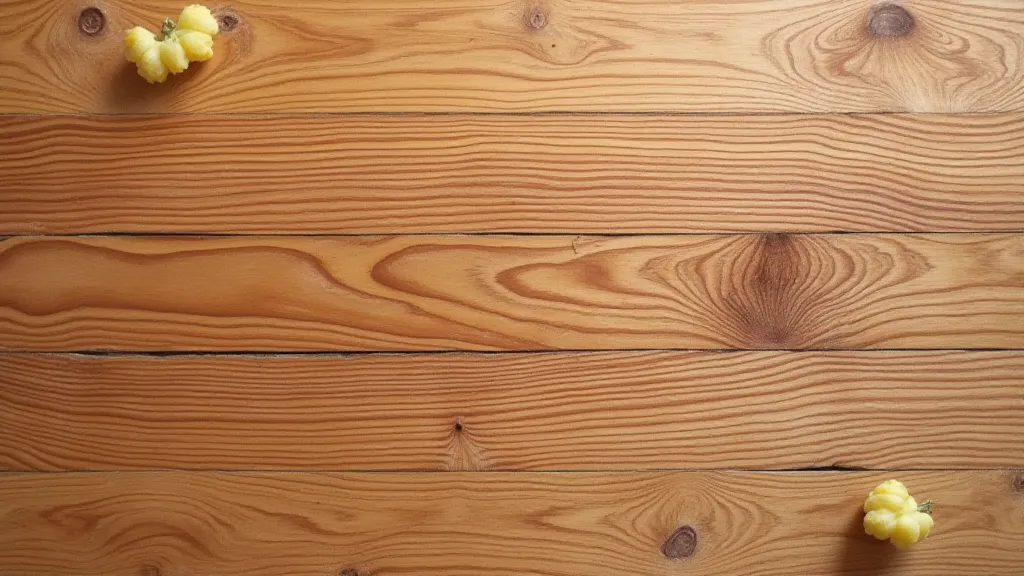
2. Redwood
Similar to cedar, redwood possesses excellent natural resistance to decay and insects. It's strong and durable, making it ideal for bird houses that need to withstand harsh weather conditions. Like cedar, it's relatively lightweight and easy to work with. Redwood's durability also extends its usefulness in more complex birdhouse designs that require intricate cuts and joinery. The cost is generally higher than cedar, but the lifespan and aesthetics often justify the investment for serious birdhouse enthusiasts.
3. Cypress
Cypress is another good option, particularly heartwood cypress. It’s naturally water-resistant and resistant to decay. It’s slightly harder than cedar, which can make it a little more challenging to work with, but offers excellent durability. The distinct grain patterns in cypress wood can also lend a rustic charm to your finished birdhouse. Due to its density, cypress can also provide excellent insulation against extreme temperatures.
4. Pine (Select Grades)
Pine can be used, but it's important to choose the right type and grade. Kiln-dried pine is preferable, as it’s less prone to warping. Avoid knotty pine, as the knots can weaken the wood. While not as naturally rot-resistant as cedar or redwood, pine can be protected with a bird-safe sealant (see the "Finishing Your Bird House" section below). Choosing the right grade and treating the wood properly are crucial to creating a durable and safe home for your feathered friends. Properly built pine birdhouses can withstand significant environmental challenges. Consider the design carefully to minimize the potential for water penetration and increase the longevity of the structure.
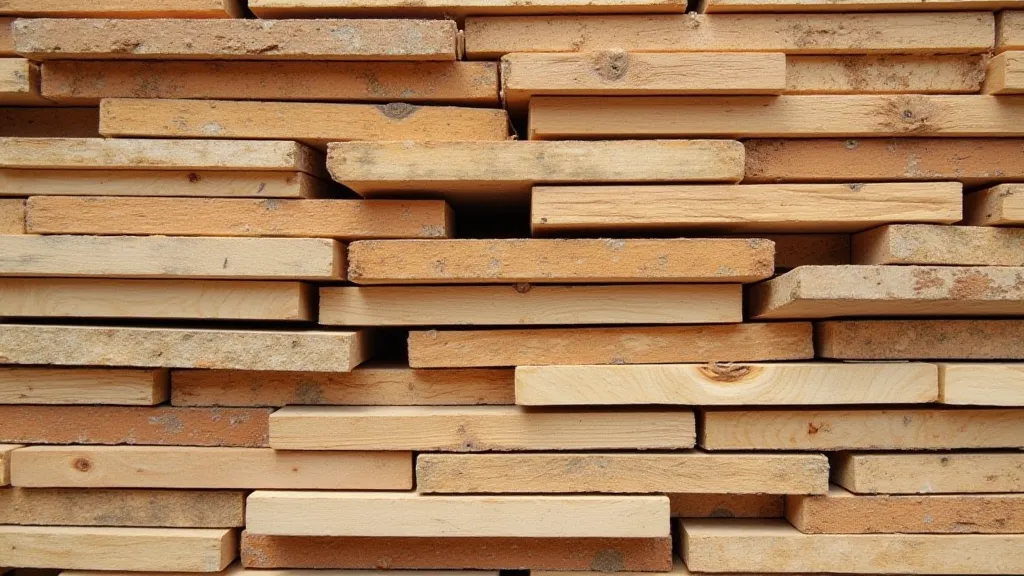
5. Exterior-Grade Plywood (with Caution)
Exterior-grade plywood can be used for larger bird house projects. However, the glue used in plywood construction should be formaldehyde-free. This is crucial for bird safety. Always seal the plywood well with a bird-safe sealant. Consider the overall design and its impact on bird safety and long-term durability. Plywood can be a cost-effective option for larger, more complex designs, but requires careful attention to detail and the use of appropriate glues and sealants.
Understanding the Importance of Predator Protection
Beyond material selection, safeguarding your bird house from predators is essential. Cats, raccoons, and snakes can pose a significant threat to nesting birds. Incorporating features like predator guards can make a world of difference. If you are looking to protect your avian tenants, be sure to learn more about building a bird house with a predator guard. Placement of the birdhouse is also critical – avoid areas easily accessible to predators, and consider mounting it on a pole with a baffle to deter climbing animals.
Woods to Avoid
Certain woods should be avoided altogether when building bird houses:
- Pressure-Treated Lumber: Contains toxic chemicals.
- Softwoods with High Resin Content: These can be harmful to birds if ingested.
- Painted or Stained Wood: Avoid using wood that has been previously treated with paints or stains, as these often contain chemicals.
Finishing Your Bird House (Bird-Safe Options)
While untreated wood is generally best, applying a bird-safe sealant can extend the lifespan of your bird house, especially if using a less naturally durable wood like pine. Look for water-based, non-toxic sealants specifically labeled as safe for wildlife. Allow the sealant to dry completely and off-gas any fumes before installing the bird house. Consider the long-term effects of any treatment, and always prioritize the well-being of the birds. Beyond the material of the house itself, remember to consider all elements of the birdhouse's construction – from the wood used for the roof to the entrance hole size and placement – to ensure its longevity and suitability for the targeted bird species. Regular inspection and maintenance, including resealing, will also help prolong the life of your birdhouse and protect its inhabitants.
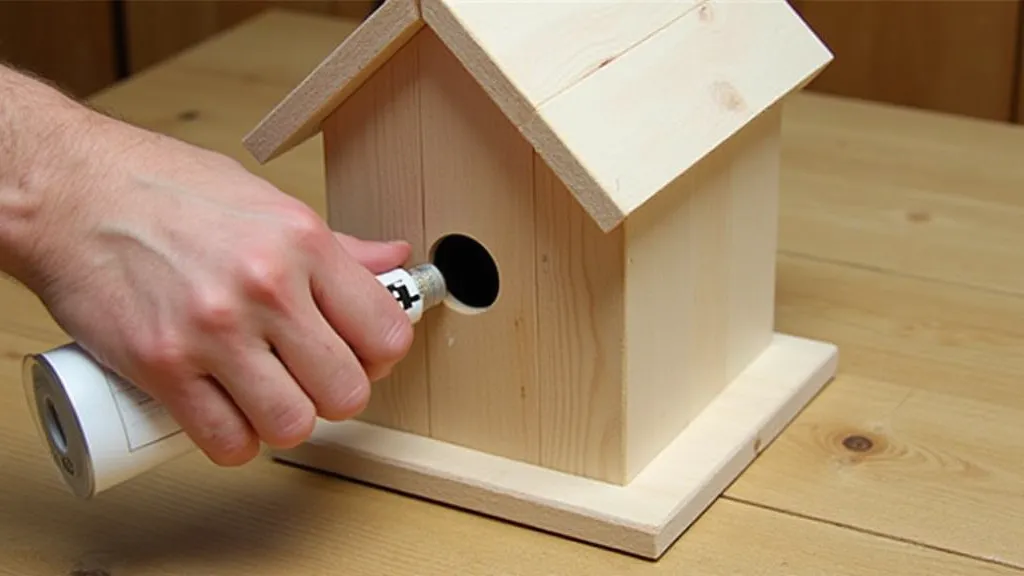
Detailed Comparison of Wood Properties
Let’s delve a little deeper into the pros and cons of each wood type, creating a detailed comparison chart:
| Wood Type | Durability | Weather Resistance | Ease of Working | Cost | Additional Notes |
|---|---|---|---|---|---|
| Cedar | Excellent | Excellent | Good | Moderate to High | Naturally insect and rot resistant; beautiful grain. |
| Redwood | Excellent | Excellent | Good | High | Similar to cedar in properties; rich color. |
| Cypress | Very Good | Very Good | Fair | Moderate | Dense and durable; distinct grain pattern. |
| Pine (Kiln-Dried) | Fair | Fair | Easy | Low | Requires sealant; prone to warping if not kiln-dried. |
| Exterior-Grade Plywood | Fair | Fair | Easy | Low | Requires formaldehyde-free glue and sealant; suitable for larger designs. |
Beyond Wood: Essential Construction Considerations
The choice of wood is only one piece of the puzzle. Proper construction techniques are equally crucial for creating a durable and safe birdhouse. Secure joinery, waterproofed seams, and a well-designed roof are all essential. Consider using stainless steel or other corrosion-resistant fasteners to prevent rust and ensure the birdhouse remains structurally sound for years to come. The thickness of the wood used is also important; thinner wood can be more susceptible to damage from the elements and predators. A well-designed birdhouse is a testament to both material selection and construction skill.
Maintenance and Longevity
Even the highest quality birdhouse requires regular maintenance to ensure its longevity. Periodic inspections for signs of damage, rot, or insect infestation are essential. Resealing the exterior every few years will help protect the wood from the elements and extend its lifespan. Cleaning out old nesting material annually is also important for hygiene and pest control. By taking proactive steps to maintain your birdhouse, you can provide a safe and comfortable home for your feathered friends for many years to come.
Conclusion
Choosing the right wood is a vital step in creating a long-lasting and healthy bird house for your backyard visitors. By carefully considering durability, weather resistance, and bird safety, you can build a beautiful and functional home for your feathered friends that will provide them with years of safe and comfortable shelter. Remember that the best birdhouse is not just aesthetically pleasing but also a safe, durable, and welcoming environment for your avian neighbors.
